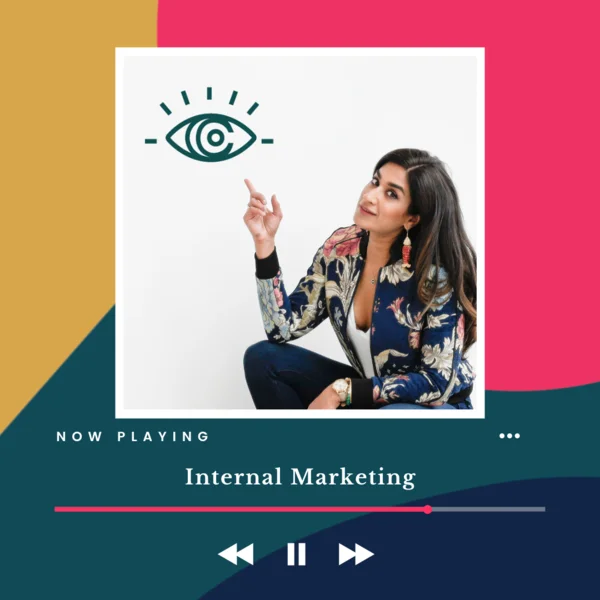Crafting compelling Google Ads copy is crucial for getting clicks and conversions, yet many businesses struggle with this.
In this post, we’ll explore tips for writing high-converting ad copy that helps you get the most out of your PPC budget.
Whether you’re new to Google Ads or looking to improve your existing campaigns, the advice below will help you engage users and drive more leads and sales.
This is not only for Google Ads; the tips mentioned below can be used with other PPC campaigns and networks as well. If you are new to paid advertising, consider checking them out.
What Is PPC or Paid Marketing?
PPC (pay-per-click) marketing, also known as paid search advertising, refers to the paid ads you see alongside organic search results on Google and other search engines.
With PPC ads, businesses bid on keywords relevant to their products/services and pay the search engine a small fee every time someone clicks on their ad.
The benefits include targeted reach, real-time optimization, and being able to track conversions. Essentially, PPC lets you connect with audiences actively searching for your offerings.
How To Create Highly Convertible Advertising Copies?
Crafting compelling ad copy is key for getting clicks and conversions with Google Ads. Below we explore some tips that can help you write better PPC copy that converts.
1. Understand Your Audience
Before writing your ad copy, take time to understand your target audience inside and out. Research their demographics, pain points, and motivations.
This allows you to speak directly to their needs and interests in your copy. Know whether they are more driven by logic or emotion.
The more you can empathize with and understand your audience, the better you can persuade them to become leads or customers.
2. Thorough Keyword Research
Conduct extensive keyword research to identify high-traffic, low-competition terms that align with your offerings. Optimizing for laser-targeted long-tail keywords helps you reach users further down the purchase funnel who are ready to buy.
Keyword research also surfaces relevant search queries and structures that can inform your ad copy. Bidding on tight, relevant keywords allows your ads to be seen by those most likely to convert.
Dedicate time to ongoing keyword research to always target the best keywords and keep your copy aligned with search intent.
3. Craft Irresistible Headlines
Your headline is often the first thing users see, so it must capture attention. Effective headlines communicate your key customer benefits or tap into the search intent of your target keywords.
Ask questions, use emotional triggers, or highlight your value proposition. Some of the best headlines create a sense of urgency or curiosity that compels the reader to click. Test different headline options and let data guide you toward higher-converting versions.
The headline sets the tone for the rest of your copy, so ensure it is compelling yet accurate. A strong headline that aligns with search intent can be the difference between an ignored ad and a conversion.
4. Include A Clear Call-to-action
An effective call-to-action clearly tells the user what you want them to do after reading your ad.
Make your CTA command-oriented and action-focused, like “Sign Up Now” or “Start Your Free Trial.” Position the CTA prominently so it is noticeable and simple to act on.
Test different verb phrases to determine which drives the most clicks. An urgent, benefit-driven CTA can boost click-through rates.
For example, “Get 50% Off Today Only” creates more urgency to click before the limited-time offer expires. The right CTA is critical for guiding users to convert after engaging with your ad copy.
5. Utilize Ad Extensions
Ad extensions like callouts, sitelinks and call extensions help take up more ad real estate and provide additional value. For example, include useful Google Ads companies Calgary phone numbers, location data, extra text and more to build on your main ad messaging.
Structured snippet extensions enable you to highlight key information like products, events and vacancies. Extensions help drive more clicks by giving users more details about your business.
They also improve ad rank, helping your campaigns show up higher in search results. The more relevant extensions you can add, the better you can supplement and enhance your core ad copy.
6. Test Different Variations
Continuously test different copy variations to determine what resonates best with your audience. Test headlines, descriptions, ad extensions, calls-to-action and more.
Google Ads lets you A/B test different options and see side-by-side performance data. This enables you to double down on what works and eliminate underperforming elements. Testing also allows you to optimize copy over time as consumer preferences evolve.
Set up recurring split tests so you can constantly refine copy to keep improving conversions. With ongoing testing, you can consistently craft higher-performing ad copy tailored to your audience.
7. Optimize For Networks
Tailor your ad copy for the network it will be shown on. For example, longer descriptions tend to work better on Google, while short and punchy copy converts better on more glanceable networks like Facebook.
Adapt language based on expected age demographics too – more formal on Google, conversational on social. Write in the active voice with simple language. Ensure copy resonates whether seen on mobile or desktop.
Optimization per network, device and format allows your messaging to be effective across placements.
8. Showcase Testimonials
Include credible third-party testimonials that build trust and social proof.
For example, quote real customer reviews praising your product or service. Statistics like “Rated 5 stars by over 1,000 customers” are also powerful. Testimonials add credibility and authority that helps convince users your offering is worth clicking on.
Blend testimonials seamlessly into your copy by citing the source and including context. Avoid overly general testimonials that lack authenticity.
Relevant testimonials from satisfied customers can boost conversion rates.
9. Include Numbers or Statistics
Pepper your copy with impressive statistics, numbers or facts that capture attention. For example, “Join over 1 million users who rely on our app.”
This helps create a bandwagon effect. Use data to summarize benefits, such as “Communicate 50% faster with our software.” Numbers that convey value and authority help drive clicks. Just ensure stats are accurate and relevant.
Back claims up with trustworthy sources. Compelling numbers make your copy more persuasive by providing tangible proof points.
10. Continuously Analyze & Refine
Use advertising analytics to guide your copywriting. Watch for low performing areas you can optimize. Double down on high converting elements.
Continuously refine copy based on real data – not just hunches. Use A/B testing to trial iterations. Ad copy optimization is never “one and done.” Analyze on an ongoing basis and be ready to make changes.
Reflect new innovations, seasonal offers and changes in buyer needs. Adapt copy as your business evolves. Use data to inform your decisions and constantly improve your Google Ads copy over time.
Final Words
Exceptional ad copy is vital for PPC success. Focus on highlighting benefits, writing conversationally, using emotional triggers, and A/B testing your copy.
With these tips, you can engage audiences and get more clicks and conversions from your Google Ads campaigns. Let these pointers guide you as you create hard-hitting copy that helps promote your business.
While the only way to gain an advantage through paid advertising is continuous testing and refining of the ad campaigns, having a checklist of the things that work out can be really helpful to newcomers, and that is why you can rely on the information shared above.






